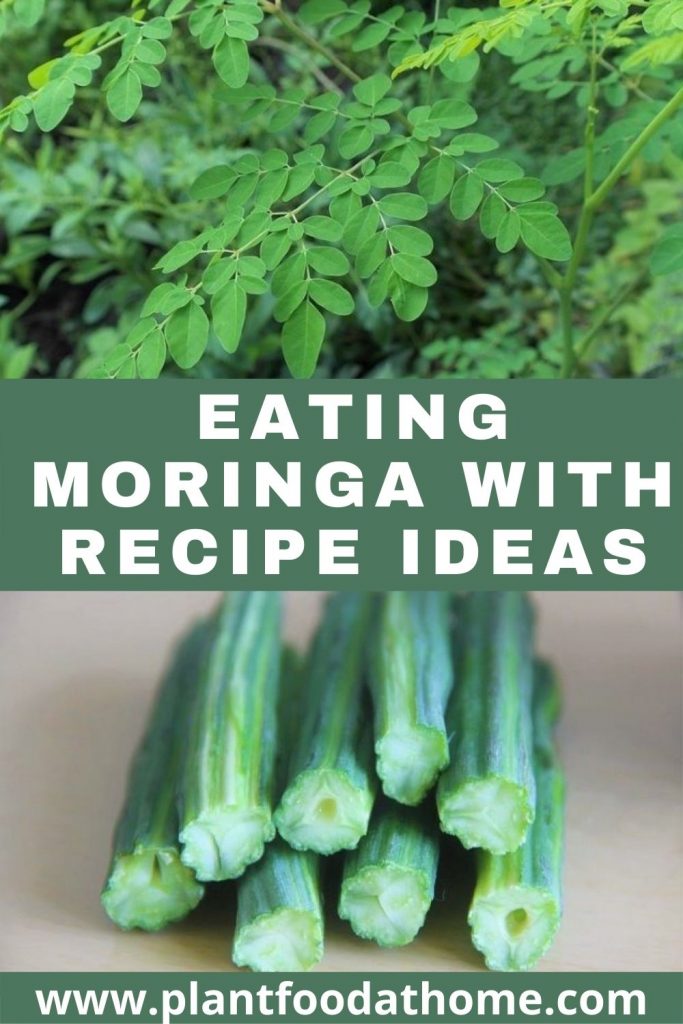Moringa is known as the miracle tree or tree of life but if you’re not sure what moringa is, if you’re wondering how to eat moringa or you’re looking for recipes ideas using this superfood then look no further. In this article, we’re exploring the many ways to eat moringa with healthy and delicious recipe ideas you can try, from all over the world.
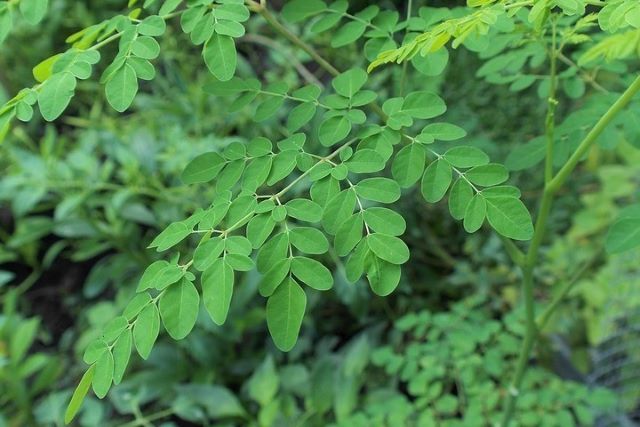
Table of Contents
Why is Moringa Called the Tree of Life?
After that introduction, you might be wondering why moringa is also called the tree of life? Well, although moringa is famed for its healing and health benefits, its food-giving benefits are where the name tree of life comes from. The moringa tree provides a valuable, and life-giving, source of food to locals in its native environment.
Every part of moringa, from the leaves, seedpods, bark, roots, and flowers is edible or traditionally used in herbal remedies. And the high nutritional content of this plant put it into the superfood category.
You may have come across moringa in powdered form sold in health food stores and grocery shelves being marketed as a health supplement. If you’re interested in these, you can find moringa powder here and moringa capsules here.
What is Moringa?
Moringa is a fast-growing tree that is entirely edible but most popular for its nutritional edible leaves and young seed pods, also known as drumsticks. The botanical name for moringa is Moringa oleifera, part of the Moringaceae family, and it’s also commonly known as the tree of life, the miracle tree, drumstick tree, the ben oil tree, and horseradish tree.
The moringa tree is native to South Asia, originating in India, and now grown widely in tropical, subtropical, and even arid regions all around the world.
In most of South and Southeast Asia, moringa is grown for sale in local markets, it’s also grown as privacy fences, and importantly, moringa is grown as a source of food.
The popularity of moringa in its native environment is due to its easy and fast-growing nature where it can reach up to 32-40 ft (10-12 meters) in height but can be kept pruned to 3-6 feet (1-2 meters) for ease of harvesting. In the right conditions, a moringa branch can simply be cut off and stuck in the ground and it will grow. Then in as little as 8 months’ time, it can be mature enough for a first harvest.
The leaves of moringa grow dark to light green on fragile branches with greyish-white trunks. It produces fragrant flowers that are pale yellow to white in color. Moringa seed pods, or drumsticks, grow in long bean-like capsules of about 7-9 inches (20-45 cm) in length that start out green and turn dark brown as they mature.
What Does Moringa Taste Like?
The taste of moringa is similar to spinach when cooked or matcha or green tea when powdered. Raw moringa will give you a grassy, slightly bitter taste, with a hint of spiciness reminiscent of horseradish. However, once moringa is cooked and added to a dish, it gives a different flavor similar to that of spinach.
Dried and powdered moringa leaves taste similar to green tea or matcha. And powdered moringa is really easy to incorporate into different dishes.
Can You Eat Moringa Raw?
Yes, moringa can be eaten raw and fresh, moringa leaves are especially good when they are young and tender. Raw moringa leaves can be eaten in salads or juiced.
By eating fresh moringa you will receive the full benefits of the vitamins and minerals when they are at their highest. Cooking moringa on excessive heat reduces some of the vitamins and enzymes.
How to Eat Moringa
Being the tree of life, most parts of moringa are edible. The leaves, the young seed pods, the seeds, and the flowers are all edible. In some areas, the roots are used as condiments but unless you’re an expert on moringa roots, I would use caution as they can also be toxic along with the bark.
Among the edible parts of moringa, the leaves followed by the seed pods contain the most nutrients and are the most popular part of the plant to eat. Let’s look at how to eat each part of the moringa tree.
How to Eat Moringa Leaves
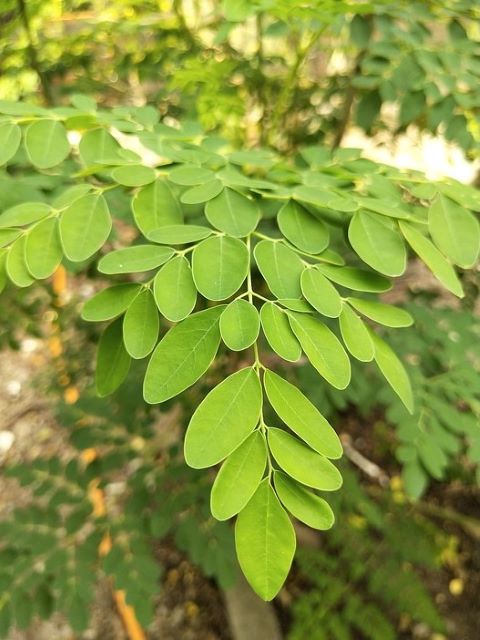
Moringa leaves can be stripped from their stalk, washed, and tossed into salads. Fresh leaves can be added to smoothies for a green smoothie health kick or juiced. Raw moringa leaves can be used to fill a sandwich or added to an omelet.
Add moringa leaves to soups, stews, or sauteed in the same way you would spinach. For the freshest results, add the leaves at the end of cooking time so you don’t overcook them.
Moringa leaves can also be drunk as tea. The leaves are usually dried and then powdered first or fresh moringa leaves can be boiled for 5 minutes before drinking. You’ll need between 1/2-1 cup of leaves, boiled in about 3 cups of water. If you’re not harvesting your own moringa leaves, you might prefer the ease of buying these organic moringa tea bags.
You may have already come across powdered moringa sold commercially in the health food market. This can also be sold in capsules. Powdered moringa leaves can easily be added to your baked goods and also included in soups, stews, and other dishes.
Eating Young Moringa Pods or Drumsticks
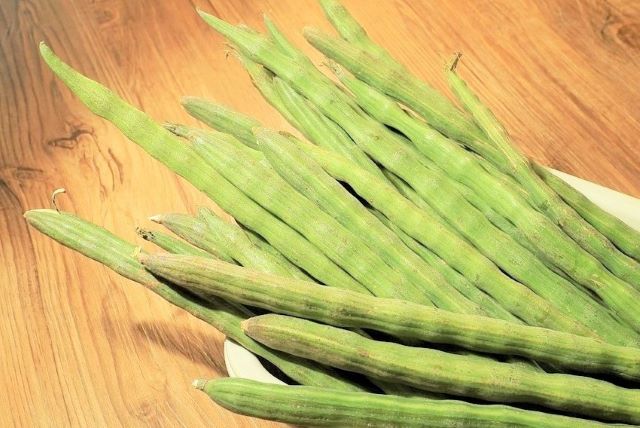
Moringa pods, also called drumsticks due to their drumstick-like appearance, can be cooked in the same way as asparagus or beans.
Pick the young and tender moringa seed pods, remove the tips on both ends, slice them, then add them to your curry. Drumsticks can also be boiled, steamed, or sauteed.
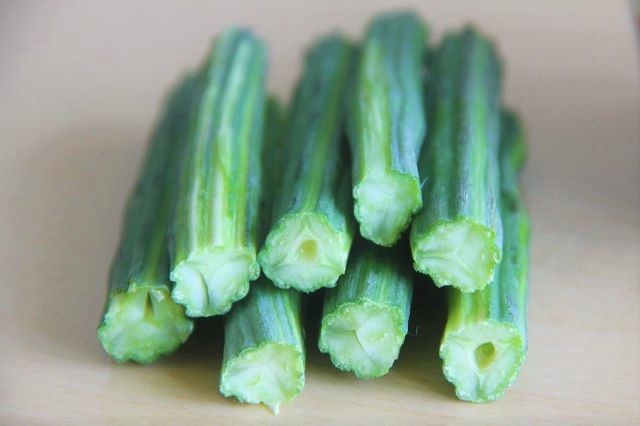
Eating Moringa Flowers
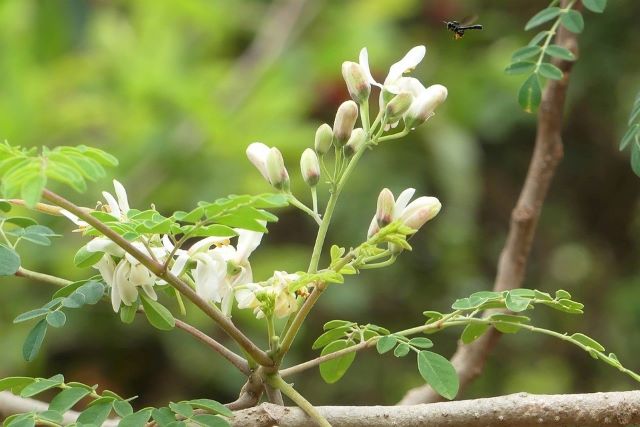
The flowers and buds of moringa are also edible. Pick the new buds or the newly blossomed moringa flowers, wash them carefully, then add the petals to salads, use them to garnish a dish, or toss them in your soups and stews. They also taste great sauteed, added to stir-fries, or simply eaten as a snack on their own.
How to Eat Moringa Seeds
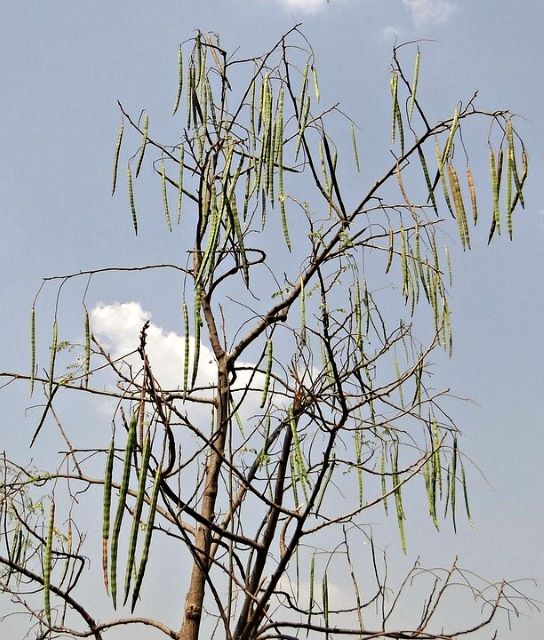
Mature moringa seeds can be removed from their pod or the drumstick, then dried before peeling them from their husk then eating. They can also be fried or roasted. You can also purchase already dried, edible organic moringa seeds here, which can also be spouted for planting.
The moringa seeds are also used to extract oil that is edible. Moringa oil is also popular as a beauty oil. This versatile moringa oil is certified organic and can be used as a moisturizer for your face, body, and hair.
Can you Eat Moringa Roots?
Moringa root is considered edible and where it gets its name of horseradish tree due to the spicy and sharp flavor of the root. The young root can be pickled or dried and made into a powder which is used in Chinese medicine as a herbal tea. However, unless you are already familiar with the preparation and recommended quantities to consume, I would exercise caution and not eat the root. The same goes for moringa bark.
Moringa Recipe Ideas
Moringa is a versatile ingredient and can be added and used in many dishes. Here are some healthy and delicious moringa recipes you can try at home.
Moringa Smoothie Recipe – from Healthier Steps. This recipe is a blend of banana, almond milk, and moringa leaves or powdered moringa. This is one of the best ways to enjoy the taste of moringa and this smoothie is perfect for the summer.
Whole Grain Moringa Bread – from A Healthy Leaf. A whole-grain bread recipe with a moringa twist. This nutty and tasty whole grain bread is definitely a healthy snack option.
Moringa Soup – from Tasting Table. This recipe uses the young pods or drumsticks of the moringa. It is a combination of moringa pods, olive oil, and some herb and spices with a hint of lime. This would be the healthiest soup you could ever have.
Moringa Flower Fritters Recipe – from My Cooking Canvas. This easy-to-follow recipe uses moringa flowers. It is another snack option that is simple but packed with nutritious value.
Moringa Leaves Stir-Fry (Thoran) with Grated Coconut – from The Take It Easy Chef. This is a traditional recipe from India that uses two superfoods; moringa leaves and coconut. It is a healthy and tasty side dish best served with curry and rice.
Potato Salad with Moringa Leaves – from Savory Spin. This moringa and potato combo will definitely be a great addition to your side dishes. Try this side dish paired with chicken or a bean dish.
3 Ingredient Moringa Latte – from Minimalist Baker. This drink will surely blow your mind! For the matcha lovers out there, here is another drink that you’ll surely love, and it’s caffeine-free. You can totally replace your matcha with moringa powder or have both in a delicious and healthy cup.
Healthy Moringa Oatmeal – from Nuts.com. This nutrient-packed oatmeal recipe will surely bring your breakfast to the next level! Spice up your breakfast oatmeal by adding moringa powder, almond milk, and some nuts, to help you jumpstart your day!
Moringa Flower Sabzi – from Times of India. This Indian recipe uses moringa flowers, combined with tomatoes, peas, chili, ghee, cumin seeds, mustard seeds, and garam masala. It’s absolutely worth a try at home!
Easy Blender Moringa Pancakes – from Good Food Baddie. With the addition of moringa powder, all the ingredients go into the blender which makes it super quick and easy to make. Eat pancakes while being healthy too!
Moringa Drumsticks Upkari – from Curry and Vanilla. This recipe uses the young moringa pods, also called moringa drumsticks. Delicious served with rice and dahl.
How to Make Moringa Powder
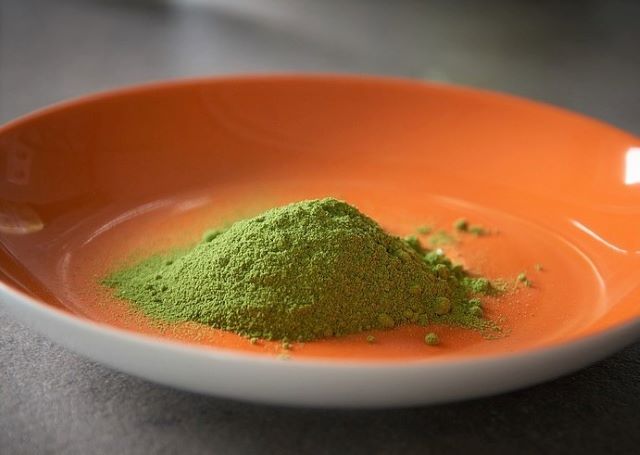
You can make your own moringa powder by drying the leaves before grinding them into a powder. Here’s how:
- Remove fresh and tender moringa leaves from the stems and branches.
- Gently wash the leaves and pat them dry with paper towel.
- Lay the leaves out in a single layer on paper towel or a wire rack and place them in a warm location out of direct sunlight.
- Turn the leaves over the next day and continue to do so over the next day or two until the moringa leaves a competently dry.
- Once the moringa leaves are dried, use a spice grinder, coffee grinder or food processor to turn the leaves into a powder. You can also use a mortar and pestle to grind up the dried moringa leaves.
- Store the moringa powder in an airtight container or jar for 6 months. You can also freeze moringa powder for a longer storage life.
Making a moringa powder means you will have moringa on hand for months at a time. So you can easily add it to your dishes.
Turning moringa leaves into a powder is also a great way to preserve the leaves you don’t use, whether you purchase them or grow them yourself. Moringa is usually best used fresh and within a few days from harvest.
Conclusion
There are loads of options and recipes you can use to incorporate moringa into your life and your cooking. As a side benefit, you might just give your health a boost! So I hope you find something here to inspire you to try moringa in a new and exciting way.
Further reading:
- Eating Raw Sweet Potatoes With Recipe Ideas
- Kaffir Lime Fruit Uses In The Kitchen And Home
- How To Eat Chayote (Choko) With Recipe Ideas
- Are Pumpkin Leaves Edible? (And How to Eat Pumpkin Leaves)
- Easy Eggplant Chutney Recipe
- Eating Broccoli Leaves and Flowers With Recipe Ideas
- Tomato Chili And Ginger Jam Recipe
- Eating Yacon With Recipe Ideas
